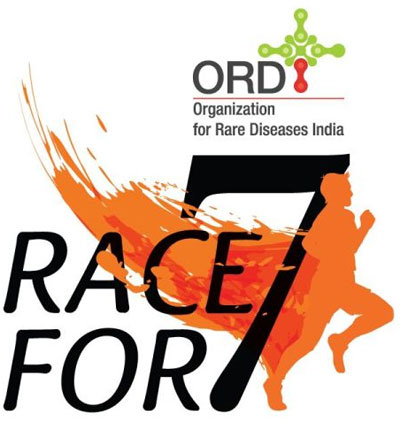Mitochondrial Neurogastrointestinal Encephalomyopathy (MNGIE) disease is a condition that affects several parts of the body, particularly the digestive and nervous systems. Many MNGIE patients experience:
- Weight and muscle loss
- Drooping of the eyelids and tingling sensations in the limbs
- Issues with the digestive track, including episodes of abdominal pain and intestinal blockage
- A longstanding, chronic, progressive condition with frequent misdiagnosis
GENTICS & BIOCHEMISTRY
MNGIE is caused by mutations in the TYMP gene. These mutations result in the insufficient activity of an enzyme called thymidine phosphorylase (TP) in MNGIE patients.
SYMPTOMS
Based on an analysis of over 100 patients, the mean age at onset is approximately 18 years (5 months-35 years), although diagnosis is possible both earlier and later in life.
The typical symptoms are both gastrointestinal and nurelogical.
Symptoms are cumulative and progressive. Neurological manifestations may be subtle and underestimated by patients and healthcare providers and therefore recognized late.
When gastrointestinal symptoms are typically the first manifestation, the diagnosis and consequently the appropriate treatment may be significantly delayed because of misdiagnosis (anorexia, Crohn’s disease, etc.
- Gastrointestinal
Symptoms can include abdominal pain or cramps, vomiting/nausea, diarrhea, abnormal bowel sounds, intestinal pseudo-obstruction, feeling full early, delayed stomach emptying, difficulty swallowing, etc.
- Weight Loss
Most patients experience thinness during the course of disease.
- Neurological
Symptoms can include drooping of the upper eyelids, weakness of muscles that move the eyes, damage to the peripheral nerves causing abnormal sensations and weakness in the feet and hands.
Almost all people with MNGIE have gastrointestinal dysmotility, a condition in which the muscles and nerves of the digestive system don’t move food through the digestive tract efficiently. Patients then can’t absorb nutrients from food, causing extreme weight loss and wasting of the muscles. Some other symptoms of MNGIE are chronic intestinal pseudo-obstruction/dysmotility and gastroparesis.
Diagnosis
To confirm the diagnosis of MNGIE
- Thymidine and Deoxyuridine test: Increased concentration of these metabolites in blood plasma
- Thymidine phosphorylase activity test: Thymidine phosphorylase activity is severely reduced in blood (buffy coat)
- Brain MRI: White matter changes on magnetic resonance imaging (MRI) of the brain
- Genetic sequencing: TYMP gene sequencing showing homozygous or compound heterozygous mutations
Thymidine Test
A blood sample is taken to measure the levels of two metabolites, thymidine and deoxyuridine. Elevated levels of plasma thymidine and deoxyuridine are sufficient to make the diagnosis of MNGIE.
Thymidine Phosphorylase Activity Test
A blood sample is taken to measure thymidine phosphorylase activity. Low thymidine phosphorylase activity can support a diagnosis of MNGIE.
Brain MRI
In MNGIE patients, an MRI of the brain typically shows abnormal white matter, caused by a brain condition called leukoencephalopathy. This finding supports a diagnosis of MNGIE.
Gene Sequencing
A blood, saliva or cheek swab sample is taken for genetic sequencing to see if there are any mutations in the TYMP gene. Mutations in the TYMP gene can confirm a diagnosis of MNGIE.
MNGIE awareness in INDIA
Talking about India, due to non-availability of proper testing facilities, MNGIE is often overlooked or misdiagnosed with anorexia nervosa, inflammatory bowel disease, myasthenia gravis (due to the extraocular, lean body weight and limb muscle weakness) or celiac disease(due to the prominent gastrointestinal manifestations).
Also, with celiac disease and other gastrointestinal issues and patient not getting benefits after taking Gluten free diet, should be tested with Thymidine deficiency. But since thymidine testing facilities are not available in India it’s because big problem to diagnose MNGIE in a country like India.
Current Research
Presently there are two major companies which were doing there research for any possible treatment for MNGIE.
- Entrada Therapeutics, Boston, USA – led by CEO Dipal Doshi, Entrada Therapeutics is a medical research-based company which aims to provide treatment for rare disease using intracellular biologics branch of medical science. Back in 2018, they have started their research program for developing Enzyme Replacement Therapy for MNGIE diagnosed Patients. But in the due to lack of funds and active patient’s data, they decided to cease their programme in mid-2020.
- Bridget Bax, St. George’s University of London, Deputy Head of the Institute of Molecular and Clinical Sciences- Her research focuses on the understanding the molecular mechanisms that underlie rare diseases and on the development of cell-based therapies for their treatment. Dr Bax has a particular interest in the ultra-rare disease, Mitochondrial Neurogastrointestinal Encephalomyopathy (MNGIE).
Both of these researches are almost their half-way, but collecting data of active MNGIE diagnosed patients will definitely be great help for them, since it will help to encourage there efforts.
Indian Group for MNGIE
To collect database of active MNGIE patients, in 2019 a facebook page named “MNGIEIndia” was formed which aims to gather MNGIE patients together on social media.
Also to get in touch directly we have our some paediatricians in every state of India, from whom you can get in touch with.
- Rajasthan State- Dr. Priyanshu Mathur. Assistant Prfessor, Prediatric Medicine, JK Lone Hospital, SMS Medical College, Jaipur-E-mail: priyanshu82@gmail.com
REFERENCES:-
- https://www.mngie.com/
- Garone, S. Tadesse, M. Hirano, Clinical and genetic spectrum of mitochondrial neurogastrointestinal encephalomyopathy, Brain. 2011; https://www.ncbi.nlm.nih.gov/pubmed/21933806
- C. Lara, M.L. Valentino, J. Torres-Torronteras, M. Hirano, R. Martı´, Mitochondrial Neurogastrointestinal Encephalomyopathy (MNGIE): Biochemical Features and Therapeutic Approaches, Biosci Rep. 2007; https://www.ncbi.nlm.nih.gov/pubmed/17549623
- M. Hirano, Mitochondrial Neurogastrointestinal Encephalopathy Disease, GeneReviews® [Internet]., U.S. National Library of Medicine. 2016; https://www.ncbi.nlm.nih.gov/books/NBK1179/



